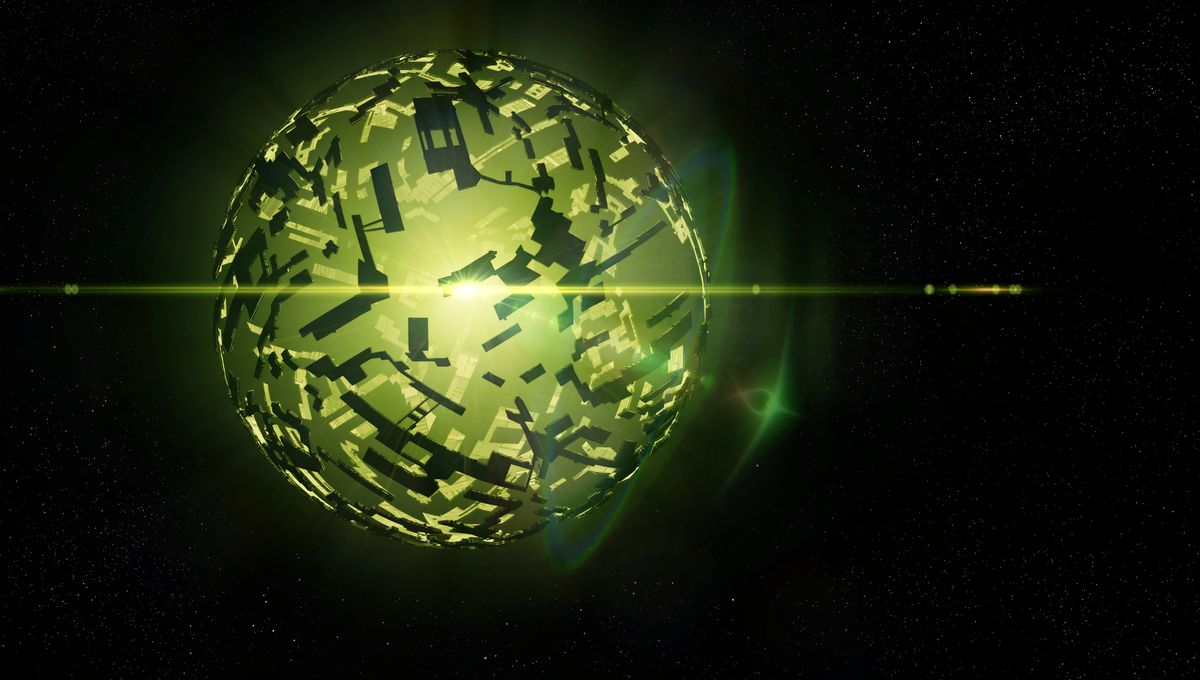
The Sun emits a stupendous amount of light. Its luminosity is almost 400 billion billion megawatts. The Earth gets less than 0.0000001 percent of that. It’s free energy and there is a way to get it, if you do not mind constructing something vastly beyond humans’ capabilities: a Dyson sphere.
This is a theoretical type of megastructure that envisions wrapping a star in an energy-harvesting sphere millions of kilometers in radius. It doesn’t have to be a sphere per se; the proposals often see it as a swarm of solar panels harvesting and then transferring said energy to hubs or planets. Those are specifically called Dyson swarms.
The first proposal of such a structure came originally from science fiction, in Olaf Stapledon’s novel Star Maker. However, it was physicist Freeman Dyson in 1960 who explored it as a serious scientific concept, though he considered the standard depiction of a solid shell around a star impossible.
It was interesting for two reasons. First, it was seen as a likely step for a power-hungry civilization to try to employ as much of its star’s energy as possible. The second reason is that if these Dyson spheres exist in the universe, we should be able to see them. Searches so far have just provided a lot of false alarms.
Seven possible candidates turned out to be observations picking up distant galaxies on the same line of sight. The notorious Boyajian’s star, whose changing luminosity has perplexed astronomers for years, was not-very-seriously accused of harboring a Dyson sphere, but nothing really supported that argument.
We are searching, but we have not found any alien megastructures around any star. Although it turns out, it doesn’t even have to be a star. A few years ago, researchers looked at ways a Dyson sphere could work around a black hole – and they do work. One could potentially use the extreme conditions around a black hole to get energy out, and a lot of it.
But the discussions surrounding Dyson spheres often don’t ask an important question. Does a civilization require that much energy? Soviet astronomer Nikolai Kardashev devised a scale to assess the technological level of a civilization based on its energy consumption. Type I is a civilization that has access to all energy available on its planet. We are not even there yet. It is for Type II civilizations that are directly using ample portions of their star’s energy that a Dyson sphere makes sense.
But does a Type II civilization itself make sense? A recent piece of work by NASA suggests that by looking at a realistic extrapolation of life on Earth, a Dyson sphere would not work for us. First of all, you’d have to sacrifice Mercury, but even if we don’t care about the smallest planet, we do not really need to do it. The work showed that a population of 30 billion humans with a high standard of living would still use less than the sunlight reaching our planet.
So what exactly would we be building it for? There might be breakthroughs that require it. And all this is not stopping astronomers looking for those structures and the energy releases they would deliver, like the first low-frequency search of galaxy-spanning civilizations in 2,880 galaxies.
Source Link: What Are Dyson Spheres And What Are Our Chances Of Finding Them?